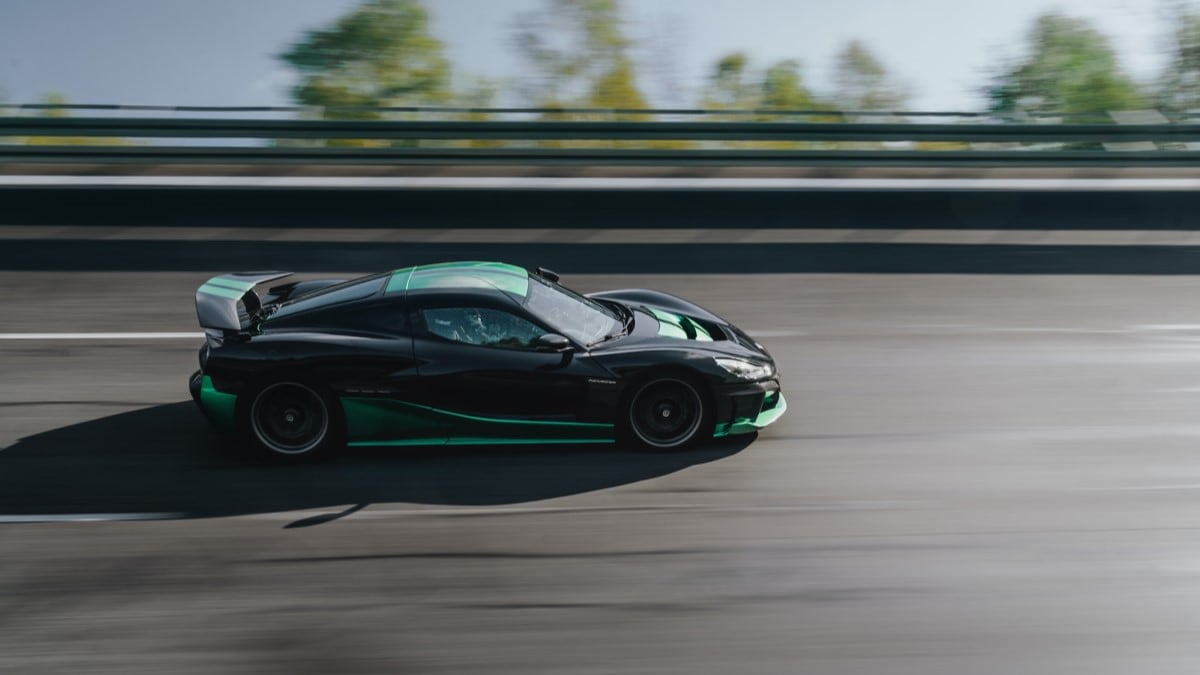We thought the Rimac Nevera was done setting speed records when it obliterated 23 different marks in a single day earlier this year. Still, the tiny Croatian automaker had one left because this thing is T-S-A-F.
Backwards.
“To round off the year with a bit of fun,” Rimac says, test driver Goran Drndak took the Nevera up to 171 mph in reverse.
Related: The Ten Fastest Electric Cars (that you stand a chance of actually affording)
“It occurred to us during development that Nevera would probably be the world’s fastest car in reverse, but we kind of laughed it off,” says Chief Engineer Matija Renić. “But then, we started to talk about how fun it would be to give it a shot.”
The car might have been physically capable of more. Renić explains, “Our simulations showed that we could achieve well over 150mph, but we didn’t have much of an idea how stable it would be.” Drndak braked not when the car stopped accelerating but when he hit a braking point on the track designated for safety reasons.
After all, driving backward at Formula-1-car speed is a scary proposition. “You’re facing straight out backwards, watching the scenery flash away from you faster and faster, feeling your neck pulled forwards in almost the same sensation you would normally get under heavy braking. You’re moving the steering wheel so gently, careful not to upset the balance, watching for your course and your braking point out the rear-view mirror, all the while keeping an eye on the speed,” he explains.
For perspective, Rimac notes, the legendary Lamborghini Miura became the fastest production car in the world in 1967 by breaking the 170 mph barrier facing the right way.
The Nevera – price point $2.2 million – is a 1,914-horsepower electric car with a separate motor for each wheel. The EPA certifies it for 287 miles between charging sessions, but we highly doubt it’s capable of that distance at 171, in reverse.








